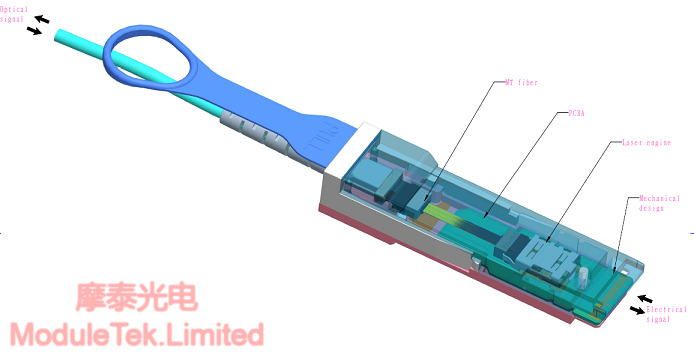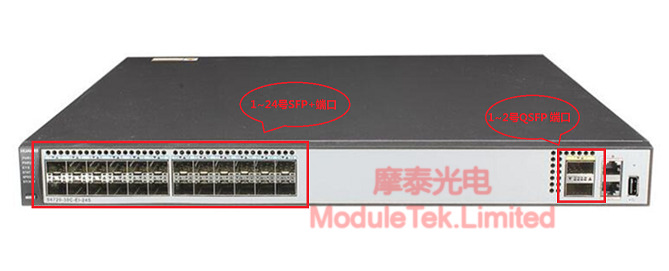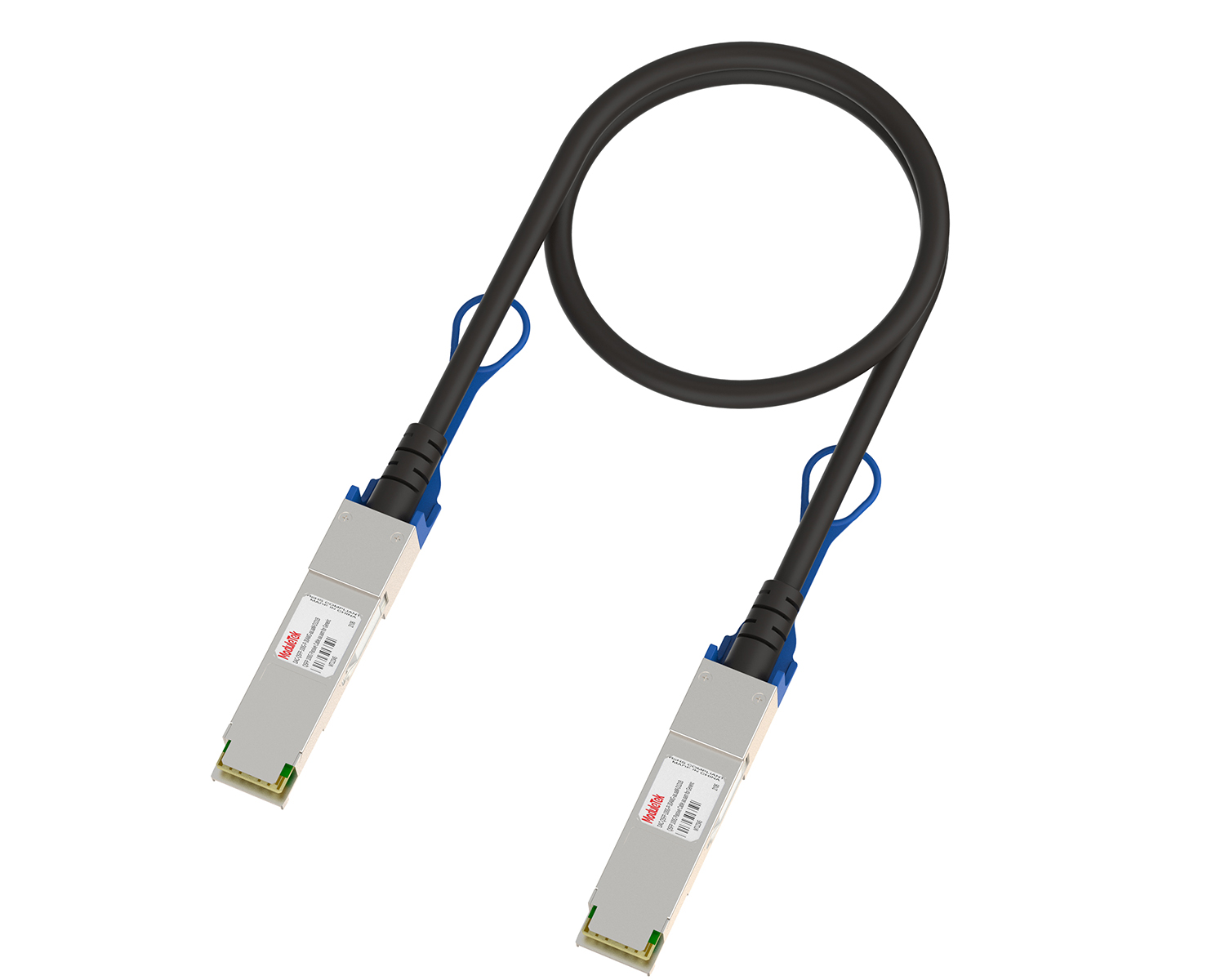40G to 10G Active Optical Cable (AOC) Solution
Time: 2020-02-231. Active Optical Cable (AOC) for 40G to 10G Introduction
QSFP-40GB-AOC-4SFP+ Active Optical Cable is dedicated to interconnect 40G QSFP ports to 10G SFP+ ports. It consists of multi-core multimode fiber optic cables interconnecting one QSFP terminal with four SFP+ terminals, as shown in the figure below, with an internal optical engine at the QSFP end, which transmits four pairs of transceiver signals through multiple parallel fibers by VCSELs and PD displays:

Figure 1 QSFP Terminal Internal Optical Engine
Four pairs of transceiver signals are transmitted from the QSFP end to four independent SFP+ terminals via parallel optical fiber, thus realizing 40G to 4-way 10G full-duplex application, corresponding to the branch structure shown below:

Figure 2 QSFP end branching to four independent SFP+ interfaces
QSFP end adopts the reliable VCSEL display technology, processed by COB process, each group of internal signals are transmitted independently, so the channels can work independently without interfering with each other, and through the internal register control of QSFP, you can specify whether the corresponding channel is on or off.
Through the use of high-quality OM3 optical fiber, QSFP-40GB-AOC-4SFP+ transmission distance can reach 300 meters, which can meet most of the indoor transmission distance requirements, and due to the fiber has good anti-interference and can be distributed linear, is a very good choice for server room cabling.
2. 40G to 10G application method
Currently on the market common 40G switch (such as Cisco, Huawei, Dell, Huasan, etc.) support QSFP port channel splitting function, after splitting the QSFP port can be divided into four 10G independent channel, the four independent channels corresponding to the SFP + terminal can be connected to different switches with SFP + port, servers or NICs for independent communication.
Take the Huawei S6720-30C-EI-24S-AC switch as an example (as shown in the figure below, the switch itself comes with 24 SFP+ and 2 QSFP hardware ports), after splitting the QSFP port No. 1, the switch automatically generates four 10G virtual ports, 25, 26, 27, and 28, which are in turn connected to the fiber optic numbering tubes of the SFP+ terminals with numbers 1, 2, 3, and 4. These four 10G ports correspond to numbers 1, 2, 3 and 4 on the fiber optic numbering tube at the SFP+ end, so that four different 10G devices can be connected to a single QSFP port for simpler cabling and more stable performance.

Figure 3 S6720-30C-EI-24S-AC Switch Port Distribution
Moduletek Limited provides the products covered in the above application guide.
If you have any questions about the above content, you can contact us by Email : web@moduletek.com

 40G/100G Optical Transceivers
40G/100G Optical Transceivers 10G/25G Optical Transceivers
10G/25G Optical Transceivers 155M/622M/2.5G Optical Transceivers
155M/622M/2.5G Optical Transceivers 100M/1G Optical Transceivers
100M/1G Optical Transceivers FC 16G/32G Optical Transceivers
FC 16G/32G Optical Transceivers CWDM/DWDM Optical Transceivers
CWDM/DWDM Optical Transceivers 100M/1G/10G Coppers
100M/1G/10G Coppers Active Cable AOC
Active Cable AOC Direct Attach Cable DAC
Direct Attach Cable DAC Regular/MTP-MPO Fiber Patch Cords
Regular/MTP-MPO Fiber Patch Cords MT2011
MT2011 MT2010
MT2010 CodingBox
CodingBox






